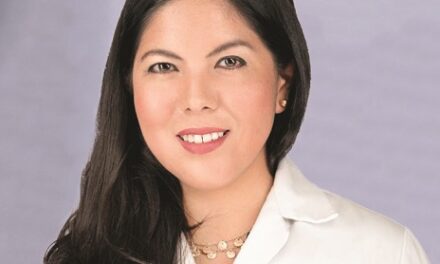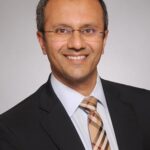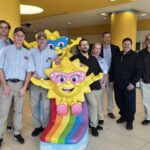A living legend who has changed life for literally millions of people around the world paid a visit to South Florida in December, but there were no cameras and news crews surrounding him and he did not spend his time with dignitaries and officials. Instead, Forrest Bird, M.D., D.Sci., Ph.D., came to Florida and went to Kindred Hospital Hollywood, where he spent several hours with the staff, enthralling them with stories of his life as a physician, inventor, researcher, aeronautical engineer, pilot and entrepreneur. Bird is one of the worlds most prolific inventors and has had a profound impact on both modern medicine and aviation. Best known as the inventor of the worlds first mass-produced mechanical ventilator, the Bird Universal Medical Respirator or Bird Mark 7, the remarkable and ageless 86-year old is still working, contributing through research, teaching, writing, lecturing and consulting from his home base in Sagle, Idaho.

Respiratory care students with Dr. Bird
The Bird respirator, a device that he created in 1955 in order to ease the breathing of his first wife, who had emphysema, remains in use around the world in various versions and is the centerpiece of the company that Bird founded, Bird Products Corporation. That prototype device proved so effective that it soon became the standard in modern medicine, paving the way for the development of intensive care units for both adults and children and changing the management of cardiopulmonary disease. Until Birds invention, the only treatment for respiratory failure was the iron lung.
At Kindred Hollywood, Bird presented a slide show depicting the development of the ventilator, from the original model that actually incorporated a doorknob to the most recent one, the interpercussive ventilator. In 1970, Bird developed the “Baby Bird” that revolutionized neonatology, leading to a 60% reduction in death rates for premature infants with lung disease.
Although his invention forever changed the practice of medicine, Bird did not invent the ventilator as a physician. He began his career as a pilot and aeronautics engineer who had been taught to fly by his father at 14 and became an Army Air Corps pilot in World War II. Bird saw parallels between the functioning of the human lung and the aerodynamics of flying, and based his ventilator design on the movement of air through the planes wings. The Army was so impressed with his invention that they sent him to medical school and he became an anesthesiologist. Bird also is responsible for the invention of the anesthesia machine, the valve that maintains airplane cabin pressure, the in-flight aircrew breathing regulator and other devices. His most recent invention is a hand-operated ventilator that he believes will be an essential item when the bird flu epidemic arrives, which he says is inevitable.

(l-r) Dr. and Mrs. Bird with Jerry Wright
Jerry Wright, B.S., R.R.T., Director of Respiratory Care for Kindred Hollywood, was impressed by Dr. Birds humble and gracious demeanor. “Dr. Bird is the most important person in the history of respiratory care and he acted like it was his honor to meet us. He said that typically he speaks in huge convention halls to hundreds of people and the chance to sit with a small group of clinicians was a welcome change for him. He thanked us for inviting him and complimented us on our facility and our work.”
Wright says that Dr. Birds visit inspired the respiratory therapists, nurses, physical therapists and other staff members, as well as professionals from neighboring hospitals who were invited to attend. “I never imagined that I would meet someone like him,” Wright says. “His contributions are incredible. He inspired me personally to keep learning, to learn more about percussive ventilation in particular. I am even going to his compound in Idaho this summer to attend a seminar.”
Bird was inducted into the National Inventors Hall of Fame in 1995 and was profiled last year by 60 Minutes. He was honored by the American Association for Respiratory Care at their national meeting in December, accepting the Lifetime Scientific Award for his numerous contributions to respiratory medicine and therapy.
Post Views: 1,029




























